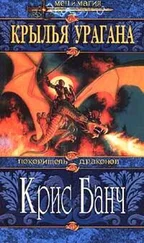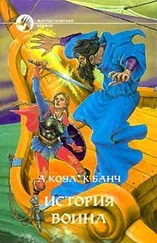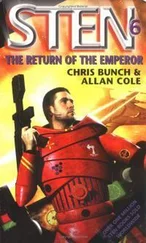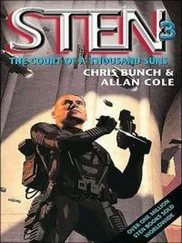The rest of the time Sten pored over details involving his ships. It did not matter that at present his command consisted only of four brand-new Bulkeley-class vessels and himself. He was to man his ship on arrival on Cavite.
Under separate covers, a fax had gone to Admiral Doorman, requesting full cooperation.
Sten had arrived on Soward just before his four ships were "launched." There wasn't a great deal of ceremony—the hull builder had signed the ships over to a secondary yard, a transporter gantry had picked up the ships, complete less armament, electronics, controls, and crew compartment, and had lugged them across the huge plant.
Incomplete as they were, Sten was in love the first time he had seen the sleek alloy needles sitting on their chocks. To him, the entry in the new Jane's update fiche was poetry:
6406.795 TACTICAL ASSAULT CRAFT
Construction of a new class of tactical ship by the Empire has
been rumored, but as this cannot be confirmed at present, this
entry must be considered tentative. Intelligence suggests that
these ships are designed to replace and upgrade several current
classes now considered obsolescent.
It has been suggested that these ships will bear the generic class
of BULKELEY. Development of this class is considered to be
under construction, with no information as to the number of
ships contracted for, commissioning dates, or deployment dates.
To repeat, All information must be considered quite tentative.
Sten figured that the editor of Jane's was practicing the age-old CYA, since the rest of the data was entirely too clotting accurate for his comfort:
CHARACTERISTICS:
TYPE: Fleet patrol craft
LENGTH: 90 meters est. (actually 97 meters)
D: Approx. 1400 fl.
CREW: Unknown
ARMAMENT: Unknown, but theorized to be far heavier than any other ships in this category.
The rest of the entry was a long string of unknowns. Sten could have filled in the details.
Each ship carried a crew of twelve: three officers'—CO, weapons/XO, engineering—and nine enlisted men.
And they were heavily armed.
For close-in fighting, there were two chainguns. Medium-range combat would be handled by eight launchers firing Goblin VI missiles, now upgraded with better "brains" and a 10-kt capacity. There were three Goblins for each launcher.
For defense there was a limited countermissile capability—five Fox-class missiles—but a very elaborate electronic countermeasure suite.
Bulkeley ships were intended either to sneak in unnoticed or to cut and run if hit. But the Bulkeley class craft were designed as ship killers.
Main armament was the Kali—a heavy, 60-megaton missile that was almost twenty meters long. Packed inside the missile's bulbous skin was a computer nearly as smart as a ship's and an exotic ECM setup. The missile was launched in a tube that extended down the ship's axis. Three backup missiles were racked around the launch tube.
Crew space, given all this artillery and the monstrous engines, was laughable. The captain's cabin was about the size of a wall closet, with pull-down desk and bunk. It was the most private compartment on the ship, actually having a draw curtain to separate the CO from the rest of the men. The other two officers bunked together, in a cabin exactly the size of the captain's. The crew bunks were ranked on either side of the ship's largest compartment, which doubled as rec room, mess hall, and kitchen.
The only cat that could have been swung inside the ship would have been a Manx—a Manx kitten.
Big deal. If Sten had wanted luxury, he would have opted for Bishop's plan and flown BUCs.
Standard obscenity procedure: When an officer arrives at his new duty station, he reports to his new commanding officer.
In the Guard this had meant that one was to show up at the unit's orderly room in semidress uniform. Officer and his new fearless leader would size each other up; the newcomer would be given his new responsibilities and whatever trick tips the old man chose to pass on and set in motion.
The navy, Sten had learned, was slightly more formal.
The "invitation" to meet Admiral van Doorman had been hand delivered. And was printed. On real paper. That, Sten figured, meant full-dress uniform. Whites. Gloves. Clot, even a haircut.
By scurrying and bribing, Sten had gotten the batman assigned to his temporary bachelor officer's quarters to electrostat-press his uniform and borrow or steal a pair of white gloves from someone. The haircut was easy, since Sten kept his hair about two centimeters from shaven.
The card requested the pleasure of his company at 1400 hours. Sten gave himself an extra hour for the civilian grav-car to wind through the packed streets of Cavite City. Even then, he arrived at the main entrance to the naval base with only twenty minutes to spare.
His mouth dropped when the sentry at the gate checked only Sten's ID, then in a bored manner waved the gravcar forward.
Nice, Sten thought. Here we are on the edge of everything, and the taxi drivers can go anywhere they want. Great security.
He paid the driver at dockside, got out, and then goggled.
The flagship of 23rd Fleet was the Imperial Cruiser Swampscott . Sten had looked the ship up and found out that it had been built nearly seventy-five years previously; it was periodically upgraded instead of being scrapped. The description gave no inkling of just how awesome the Swampscott had become—awesome in the sense of atrocious.
The cruiser evidently had been built to the then limits of hull design, power, and armament. Upgrading had started by cutting the ship in half and adding another 500 meters to the midsection. The next stage had added bulges to the hull.
After that, the redesigners must have been desperate to meet the additions, since the Swampscott could now be described as a chubby cruiser that had run, very hard, into a solid object without destruction.
As a grand finale, there were twin structures atop the hull, structures that would be familiar to any Chinese Emperor of the T'ang Dynasty of ancient Earth.
Since the Swampscott had never fought a war, these excrescences did not matter. The ship, polished until it glowed, was used for ceremonial show-the-flag visits. It would settle down in-atmosphere in as stately a manner as any dowager queen going down steps in a ball gown. If a planetary assault had ever been required, the Swampscott would either have spun out of control or wallowed uncontrollably. In a wind tunnel, a model of the Swampscott might have been described as having all the aerodynamics of a chandelier.
Sten recovered, checked the time, and hurried into the lift tube.
Exiting, he saw not one but four full-dress sentries and one very bored, but very full-dressed, officer of the deck.
He saluted the nonexistent and unseen "colors"—toward the stern—and the OOD, then gave the lieutenant a copy of the invitation and his ID card.
"Oh, Lord," the lieutenant said. "Commander, you made a real mistake."
"Oh?"
"Yessir. Admiral Doorman's headquarters are downtown." .
Downtown? What was that navalese for? "Isn't this the flagship?"
"Yessir. But Admiral Doorman prefers the Carlton Hotel. He says it gives him more room to think."
Sten and the lieutenant looked at each other.
"Sir, you're going to be very late. Let me get a gravsled out. Admiral Doorman's most insistent about punctuality."
This was a great way to start a new assignment, Sten thought.
Admiral Doorman may have insisted on punctuality, but it applied only to his subordinates.
Читать дальше











